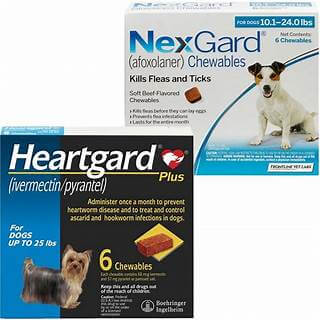What Are Lungworms In Dogs?
Lungworm infections in canines encompass various worm parasites that target domesticated and wild dogs' respiratory tracts and lung tissues. These parasites are roundworms (nematodes) and flukes (trematodes).
While roundworms can be found globally without any specific regional preference, fluke lungworms display a propensity for particular habitats.
To illustrate, the lung fluke known as Paragonimus kellicotti predominantly resides in areas like the Great Lakes, the Midwest, and the Southern parts of the U.S. The presence of specific snail and crayfish species, which act as intermediate hosts during the fluke lungworm's life cycle, explains this regional concentration.
Symptoms Of Lungworms In Dogs
Symptoms of lungworms in canines might manifest as:
- Dry cough (without mucus discharge)
- Increased breathing pace
- Reduced stamina during activities (shortness of breath, inability to engage in extended play)
- Breathing challenges
Sometimes, canines may carry a silent lungworm infection, displaying no observable symptoms.
Causes Of Lungworms In Dogs
Dogs contract lungworms by ingesting the worm's young form, the larvae.
Transmission can also occur from a mother to her pups during nursing and grooming. Once ingested, these juvenile larvae journey through the digestive system, burrow into the intestinal lining, and enter the bloodstream, eventually reaching the heart and lungs.
The time it takes for these larvae to mature into full-grown lungworms varies with the species. Some might reach adulthood within five weeks post-ingestion, while others might need up to 21 weeks.
Female lungworms lay eggs upon maturity, hatching into early-stage larvae inside the respiratory passages. These larvae or eggs are either coughed out and expelled or regurgitated. Other dogs that come into contact with the infected dog's expelled matter risk contracting the lungworms.
If the originating dog re-ingests its own expelled material containing the lungworm eggs or larvae, it will traverse the dog's digestive system again. Eventually, these are excreted in the dog's stool, presenting a risk to other dogs that might come in contact with the contaminated feces.
How Vets Diagnose Lungworms In Dogs
Your veterinarian may advise obtaining chest radiographs if your pet shows respiratory distress. In addition, they will collect a fecal specimen and might suggest conducting an airway flush if a definitive diagnosis remains elusive.
X-Rays
Upon examining chest radiographs of dogs potentially affected by lungworms, the veterinarian could identify small inflammation patches within the lungs or more expansive inflamed regions, which may suggest pneumonia. If the lung suffers significant harm, it could rupture, releasing air into the chest cavity, a condition termed pneumothorax.
A specific lungworm variety can lead to the thickening of the main tracheal wall and the emergence of tracheal nodules. These anomalies might be discernible in the radiographs.
While radiographs provide valuable insights, they must be more sufficient to confirm a lungworm infection since other illnesses might produce analogous results. Nonetheless, your vet could suspect lungworm infection based on the area you reside in or any recent travels undertaken with your pet.
Fecal Tests
The veterinarian will employ fecal examinations to detect the presence of lungworm eggs and larvae. You should provide several fecal samples over multiple days because lungworm eggs and larvae excretion are only sometimes consistent.
Airway Wash
In cases where radiographs and fecal tests are inconclusive, the vet might propose an airway flushing procedure like a transtracheal wash (TTW) or bronchoalveolar lavage (BAL). Both procedures require anesthesia.
The fluid extracted from this procedure, sourced from the dog's respiratory tract and lungs, can contain lungworm larvae, eggs, and specific inflammatory cells, offering a pathway to a definitive diagnosis.
Treatment For Lungworms In Dogs
To eliminate lungworms in dogs, the primary treatment is an oral deworming medication, typically given over two weeks.
As the body responds to the deceased worms and their larvae, inflammation may ensue. To counteract this, your vet might prescribe a corticosteroid-based anti-inflammatory drug.
It's not unusual for a dog's condition to seemingly deteriorate at the onset of treatment, given that this phase sees the highest number of expiring worms.
If you're uneasy about your dog's well-being or have any queries, don't hesitate to contact your vet for guidance or potential additional interventions.
In severe instances of lungworm infestation, cysts might develop within the lung. If these cysts burst, air may gather in the chest cavity, external to the lung, leading to a condition known as pneumothorax.
Should this trapped air impede your dog's ability to breathe, it may be necessary for the veterinarian to drain the excess air and insert a chest tube, allowing the leak to self-seal over time.
On rare occasions, surgical intervention might be warranted to seal the regions where air escapes the lung tissue.
Neglecting to treat intense lung inflammation or damage caused by lungworms can, unfortunately, lead to fatal outcomes.
Recovery And Management Of Lungworms In Dogs
In most lungworm cases, medical intervention alone eliminates the need for surgical procedures. To gauge the effectiveness of the treatment, your vet will likely request additional fecal tests to check for the presence of lungworm larvae or eggs.
Should any irregularities have been identified in the initial radiographs, a subsequent set might be recommended to assess any changes post-treatment.
Airway scarring can emerge as a consequence of lungworm infections. Long-term care may be necessary if such scarring induces symptoms like persistent coughing or asthma-related indications.
The recovery duration for canines that undergo surgical procedures tends to be lengthier. Based on the duration of the chest tubes remaining and the depth of the lung surgery, the recuperation period can span anywhere from 4 to 6 weeks.
Lungworms In Dogs FAQs
How do dogs contract lungworms?
Dogs get infected with lungworms when they consume the eggs or the young larvae of the worm.
After being ingested, these larvae navigate through the digestive system, breach the intestinal lining, and journey to the respiratory passages and lungs. Here, they mature and produce additional eggs and larvae.
These newly produced eggs and larvae are either expelled through coughing or ingested once more, potentially leading to a recurrent infection.
Is it possible to spot lungworms in a dog's stool?
Not with the bare eye. The eggs and larvae of lungworms aren't visible without aid in the dog's stool. However, with the help of a microscope, a veterinarian can detect them in a fecal analysis.
Can lungworms affect humans?
Humans aren't susceptible to lungworms.
Nevertheless, ensuring that your canine is dewormed regularly (ideally once or twice annually) is crucial. This is because certain parasitic worms can indeed pose threats to human health.







